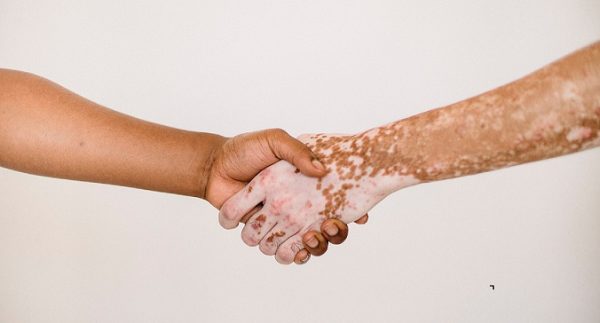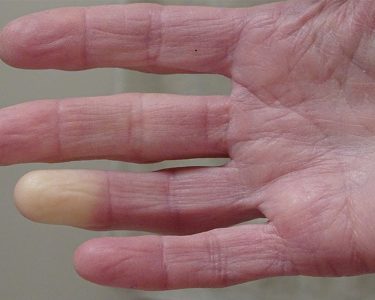Scleroderma
Raynaud’s phenomenon is when the fingers and toes lose circulation and turn white when exposed to cold. Raynaud’s affects usually occur several months before skin changes in diffuse scleroderma. Other early signs are painful joints, morning stiffness, swollen red hands, weariness, or weight loss. If such type symptoms are showing, you have to consult a specialized senior care doctor or dermatologist.
On the other hand, Raynaud’s phenomenon without an underlying disease is not rare in the general population, particularly among young women. This type of Raynaud’s refers to as “primary Raynaud’s.” The anti-nuclear antibody (ANA) is often negative in primary Raynaud’s; however, it is usually positive in secondary Raynaud’s caused by scleroderma or other auto-immune illnesses. The vast majority of young women who acquire Raynaud’s symptoms in their teenage years never obtain a positive ANA, nor do they suffer any systemic damage or skin abnormalities.
The following are some of the indications and symptoms of scleroderma that you should not ignore:
1. Skin that is hard, thickening, or tight:
Scleroderma gets its name from this characteristic. Some people get one or two patches of thick, rigid skin, and others have patches all over their bodies. The wide, stiff skin can feel like it’s glued to the body. The patches may not feel too rough if you have morphea (more-fee-uh), the most frequent type of scleroderma. The tough skin may soften over time.
2. Hair loss and reduced sweating:
If you have tough skin, you’ll notice that it’s glossy, discolored, and hairless—the capacity to sweat lost in tough skin.
3. Dry skin and itching:
Scleroderma causes dehydrated skin, which itches. Extreme dryness can lead to skin breakdown and the formation of ulcers.
4. Changes in skin color:
Hardened skin patches might be lighter or darker than your natural skin color. Scleroderma is active and spreading in some persons, resulting in violet-colored skin; this patient has difficult-to-touch darker and lighter (white) parts.
5. Stiff joints and difficult to move:
When complex, thickened, or tight skin grows over a joint (for example, the jaw, wrist, or finger), it might be challenging to move that joint. Because of tight skin, the patient in this picture is unable to open her hands full. Physical therapy can assist you in maintaining your complete range of motion. If you don’t have it, you can lose your ability to straighten or bend a finger, elbow, wrist fully, or other portion of your body.
6. The skin has a salt-and-pepper appearance:
It most commonly occurs on the upper back, chest, or scalp (along the hairline). The skin may feel rigid or tight. However, this is not always the case. If your skin has a salt-and-pepper appearance, you should consult a doctor. These symptoms could indicate that you have a scleroderma kind that affects your internal organs. Your prognosis will be better if you were diagnosing and treated as soon as possible.
7. Fingers with sores and pitted scars:
Skin sores are prevalent in those who have a kind of scleroderma that also affects the internal organs. These sores usually appear on skin that stretched too far. Finger sores are very prevalent. Some persons get pinhead-sized pitted scars on the tips of their fingers and the sides of their fingers.
8. Less growth of bone:
When a kid has certain scleroderma, such as linear scleroderma or en coup de saber, the scleroderma can cause bone growth to disrupt. The face may become disfigured if scleroderma affects the skull. These abnormalities are incredibly uncommon.
9. Visible blood vessels:
Blood vessels are visible when microscopic blood vessels near the skin’s surface expand. Tiny red patches, mainly on the hands and face, may appear. Although it is not unpleasant, many people dislike how these appear. It is possible to get help.
COLD SENSITIVITY, STRESS SENSITIVITY, OR BOTH:
When scleroderma affects the internal organs, this is a common early warning sign.
Raynaud’s phenomenon is the medical term for this symptom. In chilly weather or when you are agitated, it causes various areas of your body, commonly the fingers, toes, ears, or tip of your nose, to feel cold and go numb. Your skin may turn white, then blue. The damaged areas generally turn red as blood flow returns to normal.
SCLERODERMA AFFECTS INTERNAL ORGANS:
When scleroderma affects the internal organs, it is known as scleroderma of the internal organs.
Scleroderma can damage the skin as well as internal organs, including the lungs and kidneys. The following signs and symptoms may indicate that scleroderma has affected an internal organ:
- System of digestion
- Issues with swallowing
- Heartburn
- Diarrhea
- Constipation
- After eating, have a bloated feeling.
- Weight loss without exerting effort
- Organs not listed above
- Blood pressure that is too high
- Abnormal heart rate
- Breathing problems
- Insufficiency in sex desire
If you have any of these symptoms, you have to consult a dermatologist or other scleroderma specialists. The sooner you’re detected and treated, the higher your chances are of a positive outcome.




